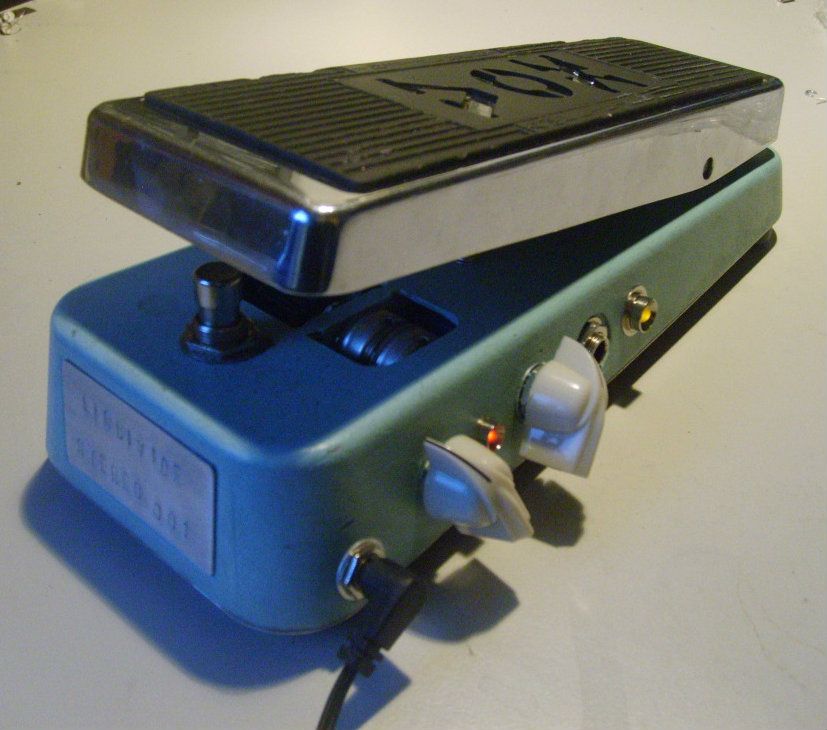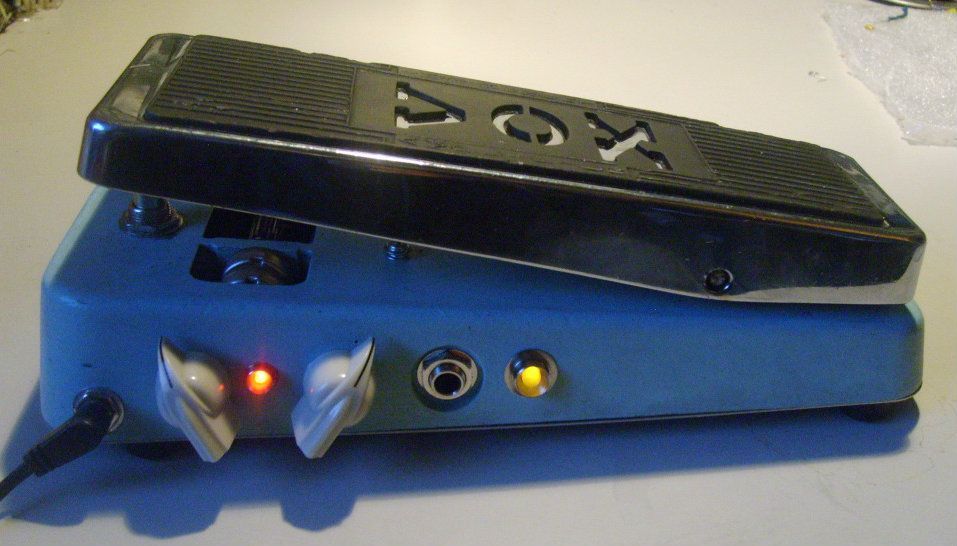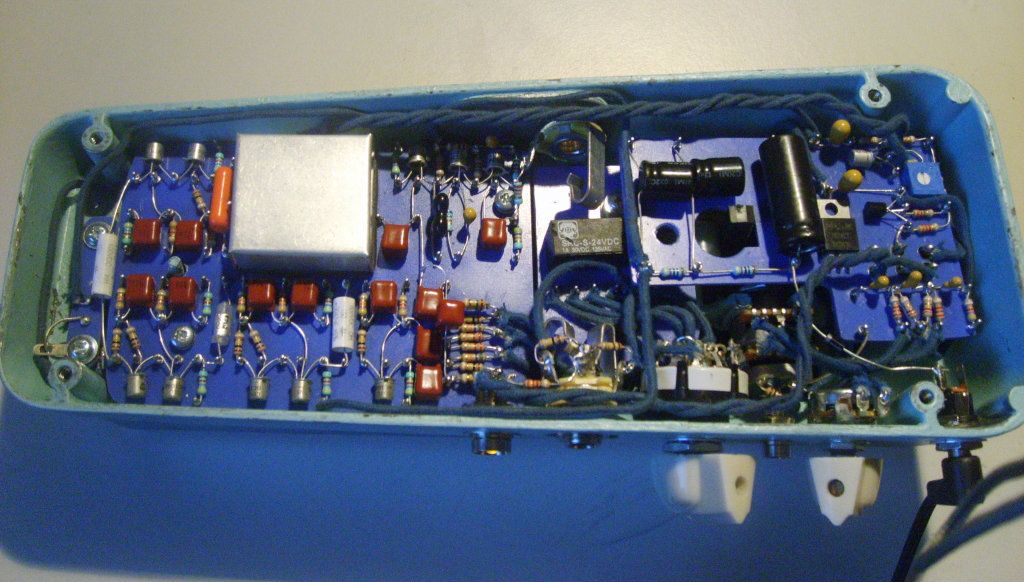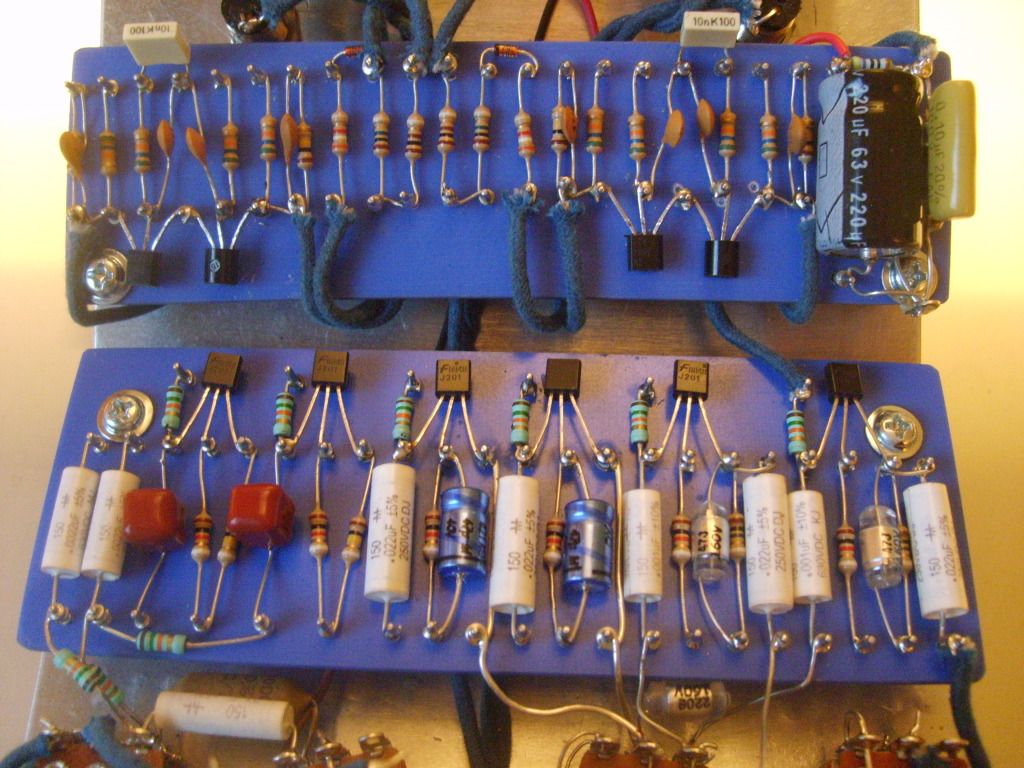|
|
I replaced the treadle with the the chrome one from my Vox-Wah I bought way back in '94 because, well it's obvious isn't it? it wayyyy prettier than the boring black dunlop one.
 | |
| Liquivibe Stereo 001 |
 |
| the reddish/orange light flashes along with the tempo of the effect and indicates the effect is active, the yellow light says it's in chorus-mode, It turns red in vibrato-mode |
The first pedals I build for myself where a bit overdone on the looks.
I guess I was in the - 'oh cool, with 8 blinking leds and lots of technical phrases written on the enclosure it looks just like the real thing!' -phase.
After playing around with the looks a bit I decided on going for a minimal, understated look, with little writing or graphics. and give the pedals simple names that only describe what the pedal does. Usually I don't paint the enclosures, but on a chrome theadled wah I must say a nice colour gives great contrast to the chrome, so I might try that out more.
I've divided the Circuit-boards in 4 parts so it would be easier to take it out in modules during testing and adjusting.
One board holds the power-stage and the LFO and is mounted on the foot-switch underneath it, one board holds the relay that does the switching between different effect modes,
one board holds the Audio-path and the tiny board at the heel holds the cancel switch.
There's no bypass mode so I connected the input resistor directly to the input jack.
The four effect outputs go through the dual mono/stereo/stereo-split switch to the chorus/vibrato mode relay straight to the stereo output jack.
 |
| It was quite a challenge to fit all this circuitry inside the enclose. |
I also managed to finish the Dual Plexi-Drive to keep my stereo effects in front of it stereo. It's 2 pedals with only one set of controls.
I tried making it an all in one toolbox to easily take to rehearsals and jams without needing to bring a bunch of extra cables,powersupplies, amp-splittes etc.
I've added an effects-loop in front of the left channel for my delay and maybe for my Korg multi-effect.
I also added a very simple boost function for that touch of extra volume during leads. I replaced the hi/low switch with a set capacitor, with a value halfway between the 2 settings.
 |
| J201 Dual Plexi-Drive 001. The original was designed by Brain Wampler. |
If you happen to live in the Netherlands you can order these boxes here;
http://www.newtone-online.nl/catalog/index.php?cPath=21
I'ts the online shop that started my whole pedal building madness when I stumled on it during my search for parts to fix my broken Vox-Wah.
They're amazingly fast with shipping out placed orders. I don't think I have ever waited longer than a day for the packages and one time I got a delivery I ordered at 5am that morning, and they have never made any mistakes in the orders.
The drive circuit is built from the Wampler Plexi-Drive schematic, It has been my favorite overdrive for quite some time now. I think Brain Wampler did a brilliant job with this one.
It may be the linear (class A?) design or the low parts count but I've never tried an overdrive before that sounds so clear and dynamic. I urge you to try one out if you run into one.
I use it with the drive at 12 'o clock and stick a germanium treble-booster in front of it, and keep both pedals on all the time.
This way I can control all my clean, crunch, overdrive and searing lead sounds from the guitar's volume knob. It took me a little while to get used to it but now I feel totally liberated; no more tap-dancing or having to bend down mid-song to adjust your overdrive levels; less worries, more focused on the playing.
 |
| A Boss/Ibanez flip-flop circuit with soft-touch momentary switches drive the 2 relays used for the effects-loop and boost functions. |

I'm going to test these pedals the coming week during band-rehearsals and after that I'll make some demo-video's so you can hear them in action.
I'll keep you posted.
Greetings, Liquitone.


No comments:
Post a Comment